Articles and reports from the Life Sciences and chemistry area deal with applied and basic research into modern biology, chemistry and human medicine.
Valuable information can be found on a range of life sciences fields including bacteriology, biochemistry, bionics, bioinformatics, biophysics, biotechnology, genetics, geobotany, human biology, marine biology, microbiology, molecular biology, cellular biology, zoology, bioinorganic chemistry, microchemistry and environmental chemistry.
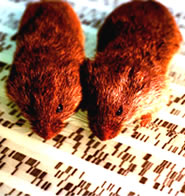
Spells and incantations step aside: scientists have found a genetic elixir of love. It makes males more faithful to females and more friendly to fellow males. It could also shed light on bonding disorders such as autism.
Larry Young of Emory University in Georgia and colleagues used a virus to deliver a gene straight to the part of voles’ brains responsible for rewards and addiction, the ventral pallidum. The gene made the animals’ brains more receptive to the hormone vasopressin 1

Museum exhibits’ genes record British forestry policies
Commercial forest planting in the north of England drew red squirrels westwards in the 1980s say UK researchers. This migration led to big changes in squirrel numbers and genetics.
The finding has implications for the protection of the endangered red squirrel (Sciurus vulgaris). Many conservationists advocate leaving ’wildlife corridors’ for animals to travel between patches of fragmenting habitat. This is the first evi
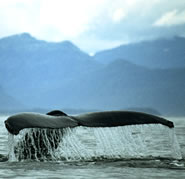
Fossils bridge gap between land mammals and whales.
Fifty million years ago, two mammals roamed the desert landscapes of what is now Pakistan. They looked a bit like dogs. They were, in fact, land-living, four-legged whales.
Their new-found fossils join other famous missing links, such as the primitive bird Archaeopteryx , that show how one group of animals evolved into another. And they undermine the two prevailing theories about which land mammals are most closely re
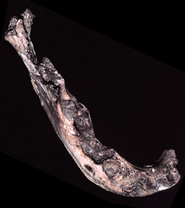
New-found jawbone hints at 200 thousand years of care in the community.
Care for the elderly and disabled may have been around a lot longer than we thought. The discovery of a jawbone scarred by severe gum disease hints that a toothless early human got by with a little help from his friends.
Minus teeth, unable to chew his or her food, the owner of the deformed jawbone nonetheless survived “for at least several months,” estimates anthropologist Erik Trinkaus of Washington U
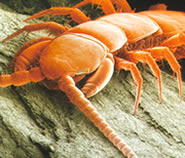
Centipede genealogy has scientists and supercomputers foxed
Four-fifths of all known creatures are arthropods. So immense is this family that no one knows who is related to whom. To resolve the relationships between the family members, the insects, spiders, crustaceans and centipedes, two research groups have performed state-of-the-art analyses – and come up with two different answers.
The main problem is the centipedes and millipedes, collectively called the myriapods. One
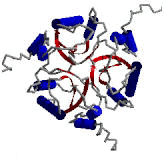
Two new techniques will assist the rapid cataloguing of proteins’ roles in the cell.
Decoding the human genome sequence was merely a preliminary step towards understanding how living cells work. Two new techniques should assist the next step: working out the functions of all the proteins that the genes encode 1,2 .
Selectively sticking to small molecules is central to most proteins’ function. Proteins generally have delicately sculpted binding sites, clefts i